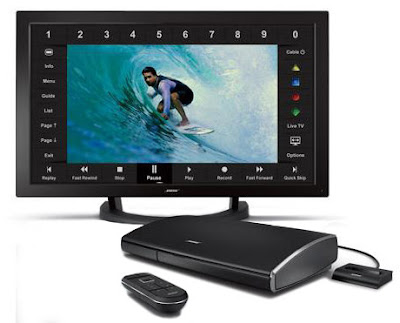Finally, it's a high-definition world—at least in the tech industry. By now, most consumers have replaced their old analog televisions with ones capable of receiving and displaying HD digital broadcasts. Two of the current crop of game consoles—the Microsoft Xbox 360 and the Sony PlayStation 3—debuted back in 2005 and 2006, with full high-definition graphics capabilities. And Blu-ray won the bitter disc-based format war, and is finally picking up steam in an otherwise stagnant home video market.
HDTV and home theater projector prices have also come down—way down. If you're not particular about owning the absolute latest technologies, you can pick up a 50-inch plasma or LCD HDTV for under $1,000. Most support 1080p, meaning that each panel has 1920-by-1080-pixel resolution. That's far more than earlier 720p panels, which varied in exact resolution, though none were as sharp. The newest models also include multiple High Definition Multimedia Interface (HDMI) ports. Each lets you replace five component cables with a single digital connection to your Blu-ray player, DVR, or game console.
There's plenty of high-definition programming now, too. For example, many broadcast television channels are available in HD. The latest Blu-ray players deliver over two million pixels of resolution and much faster disc load times than before; some can even receive audio and video over Wi-Fi. Netflix has recently begun streaming more movies and TV shows in high definition. While home theater PCs and media center extenders have failed to gain a foothold in the living room, self-contained game consoles and set-top boxes—from the PS3 to the Apple TV—are doubling as easy Netflix and YouTube portals.
Over the past half-decade, we've seen HDTV manufacturers adopt greener, more energy conscious designs, especially the latest one-inch-thin models that employ highly efficient LED backlighting. That said, two new trends have emerged. The first is a slimming of the bezel, or the visible frame around the TV; some vendors are working on making this as small and unobtrusive as possible. The other is a push toward "Smart TVs," which include built-in Internet connectivity that supersedes the need for a separate box.
That brings up an important point: it has become quite complicated to figure out how to watch your favorite shows and movies. Standard cable TV subscriptions still exist, and still offer access to hundreds of channels. But with the advent of on-demand, DVRs, Netflix streaming, and online content portals, consumers now expect to watch their favorite shows and movies on their terms. As a result, they've begun to rebel at cable TV's high monthly costs and inflexible channel packages.
Unfortunately, the studios aren't playing ball. Thanks to a complex series of deals between cable and broadband providers, TV and movie studios, advertisers, and what's left of the home video rental market, it comes down to a case-by-case basis whether you can watch a specific program with a specific gadget. Expect to see some pretty ugly battles as everyone involved fights to retain a portion of the revenue. Sadly, these conflicts often take years to resolve; look how long it took for Toshiba's HD-DVD format to lose to Blu-ray, for example.
That said, there's plenty to look forward to. At CES 2011, Vizio introduced a cinema-like 21:9 HDTV with 2560-by-1080-pixel resolution, in both 50- and 58-inch varieties; each can display CinemaScope (2:35 to 1) movies without black bars at the top or bottom of the screen. Bose has unveiled the $5,349 VideoWave, a 46-inch CCFL-backlit LCD TV with a built-in, almost completely hidden home theater system that consists of six woofers, 10 tweeters, a "Wave Tunnel," and an audio signal processing unit.
The latest high-definition tech isn't just about the living room, either. ATI's Eyefinity lets you hook up multiple HD monitors to a PC. This way, you can display a first-person 3D game's view so that it envelopes your peripheral vision—tripling horizontal screen resolution in the process. (And that's just with three monitors!) Meanwhile, Panasonic has just unveiled the VC500, a high-definition, 3D video conferencing system that can display medical procedures and computer-aided design schematics with genuine depth of field.
And speaking of 3D, despite what consumer electronics vendors will tell you, its outlook is still uncertain. To get the proper home 3D experience, you'll need a compatible TV, Blu-ray player, and extra pair of glasses for each person watching. Glasses aren't compatible between brands, there isn't much 3D content to watch, and 3D also has a minor detrimental effect on picture quality. As a result, most viewers are taking a wait-and-see approach. A few vendors—notably, Toshiba—are working on glasses-free 3D televisions, although early prototypes made it clear that this technology is a few years away from maturing.
Still, we've only begun to scratch the surface of what's possible with high-definition video. As they say in television, stay tuned—because it's only going to get more impressive from here.






















0 comments:
Post a Comment